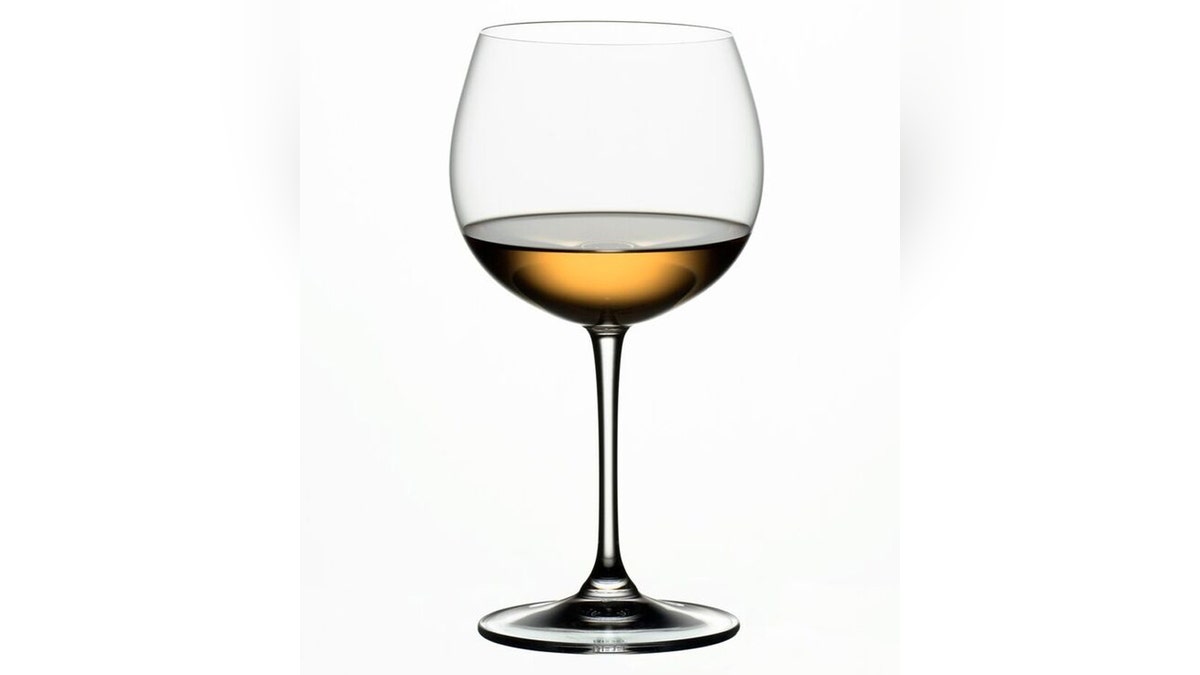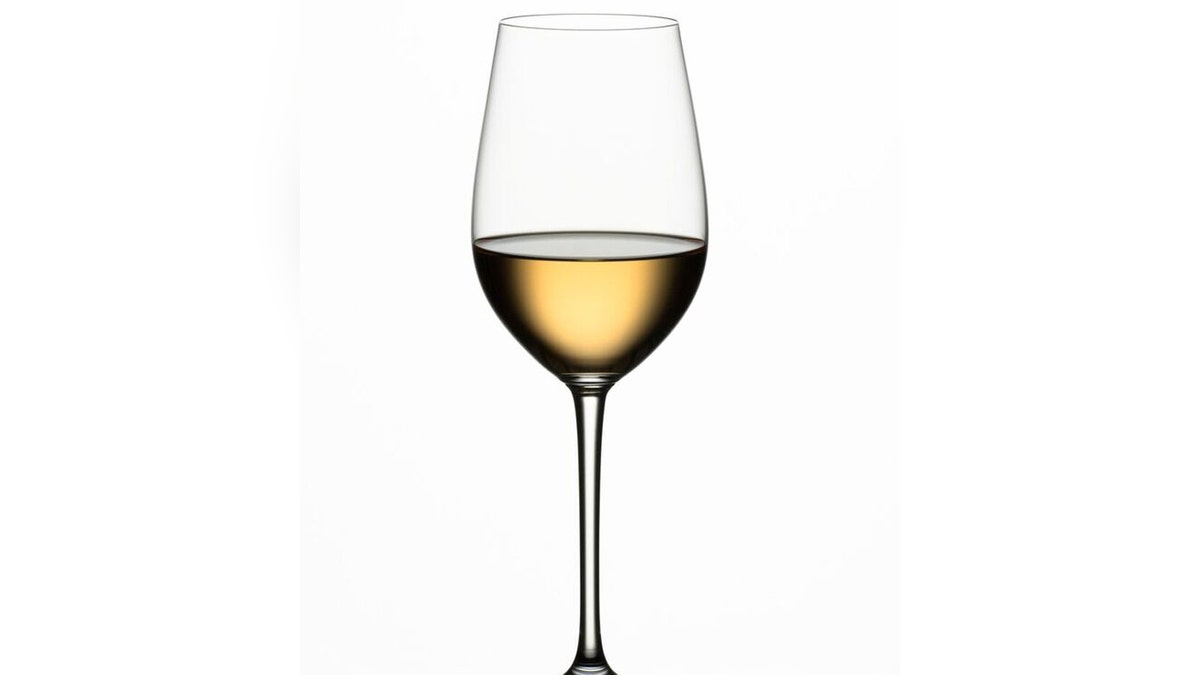
Tenth generation glassmaker Georg Riedel has developed a line of varietal specific glasses winnning favor with sommeliers and wine lovers. (Riedel Crystal)
If you’re a casual drinker of wines, you’re probably good with the wine glass you’ve got.
But if you’re considering taking things up a notch — exploring varietals and regional styles — you may want to rethink your vessel of choice. If you’re using the same glass to drink a light-bodied pinot noir and a big, bold cabernet sauvignon, you may not be experiencing the fine qualities of either.
Renowned glassmaker Georg Riedel, the 10th-generation head of Austria-based Riedel Crystal, has spent decades developing the company’s varietal-specific lines of wine glasses, using physics to bring out the best in wines made from different types of grapes.

Montrachet Glass (Riedel Crystal)
“We’re in charge of delivering the aromas and then the flavors to the palate,” Riedel says. “The perception is triggered through the fact that the glasses deliver liquid to different parts of your palate.”
The way you experience wine goes way beyond your taste buds. Riedel says it’s about how the wine feels in the mouth and – even more importantly – your sense of smell. The back of your palate is the back door to your nasal cavity, and the sense of smell that’s triggered when you swallow is key to how you experience a wine.

Riesling Glass (Riedel Crystal)
In the 1950s, Riedel’s father, Claus, developed the wine-friendly egg-shaped glass that’s prevalent today. (Before that, wine glasses were often attractive but not necessarily functional – generally in an old-school bell or V-shape.) Since then, Georg Riedel has worked with winemakers to learn what works best with different types of grapes. The company offers varietal-specific glasses in many of its lines, from the pricey hand-blown Sommelier line to the mid-range machine-made Vinum line.
“What we do is – by trial and error, with the help of the winemaker – fine-tune the shape to the expression he likes,” Riedel says. “We feel like architects. An architect has his own vision, but at the end of the day it’s the customer who tells him how his house or his apartment will be built.”
Those design skills aren’t limited to wine. Riedel is particularly proud of the company’s Coca-Cola glass, designed in 2013 with a panel of tasters from the soda giant in Atlanta to give the perfect expression to Classic Coke. The brand is near and dear to Riedel, who remembers getting a dozen glass bottles of Coke for his birthday as a child in Austria. The Coca-Cola glass pays homage to the vintage Coke bottle shape and is designed to create smaller, longer-lasting bubbles.
Michael Engelmann, wine director at The Modern NYC (the trendy restaurant at New York’s Museum of Modern Art), is a fan of Riedel’s varietal-specific line, which is inspiring interest from diners, particularly those participating in the restaurant’s wine-by-the-glass program.
“You have guests that ask the question, ‘Why did I get a different glass?’ It intrigues people.” Engelmann says.

Cabernet Sauvignon Glass (Riedel Crystal)
He says the best way for consumers to get a real sense of the difference a glass makes is to try tasting varietals from different glasses on their own.
“If people are willing to play the game at home and experiment with different shaped glasses, you can really see the differences … It’s a good experience and it can be fun.”
Not ready to take the plunge yet? Riedel’s entry-level Ouverture line (available at retailers like Target) is designed for the curious consumer who wants to test the waters before making a bigger investment (a 12-piece set that includes red, white and sparkling wine glasses costs around $80). The Ouverture glasses are not varietal-specific and have shorter stems than Riedel’s higher-end lines for easier storage and dishwashing. Think of them as gateway glasses: “From there, you could, step by step, be more refined and be more interested,” Riedel says. “If you fall in love with a varietal, maybe it’s time to move on to a varietal-specific glass.”

Pinot Noir Glass (Riedel Crystal)
With red wines, the levels of tannins, which add bitterness and complexity, make a key difference in which glass works best. For white wines, it’s all about oak and acidity. Here are a few examples of how varietal-specific glasses do what they do:
Riedel Vinum XL Pinot Noir/Nebbiolo
Thin-skinned red grapes like pinot noir and nebbiolo generally don’t have much in the way of tannins, but they tend to be heavy in mineral flavors. The flared rim allows the wine to flow relatively quickly from the front of the palate to the sides and back, essentially skipping the center of the palate. This helps balance the minerality and acidity of lighter wines and brings out the fruit to its fullest.
Riedel Vinum XL Cabernet Sauvignon Glass
With a bold, tannin-heavy wine like a cabernet sauvignon, we want to go directly to the center of the palate. (If it goes straight to the back of the palate, “green” flavors like bell pepper and mint become too strong.) The wide opening brings it to the center, smooths out the tannins and brings out the softness and sweetness of a Cab.
Vinum XL Montrachet/Oaked Chardonnay
This large-volume, round glass, named for one of the Burgundy region’s most prestigious growing areas, is designed for denser, more complex whites with higher levels of alcohol. The wide mouth steers the wine mainly to the sourness-sensitive edges of the tongue, bringing out a fresh acidity to balance the toasty aromas that come from oak aging. The large, round bowl also keeps vanilla notes from becoming too strong.
Vinum XL Riesling
The Riesling grape variety is known for high acidity balanced with residual sugar, along with mineral components. While oaked chardonnays tend to be richer and softer, Rieslings are often crisper and fresher. This flavor profile is best enjoyed when tasted on the tip of the tongue, and a narrower glass ensures that the wine is delivered directly to the front of the mouth.
